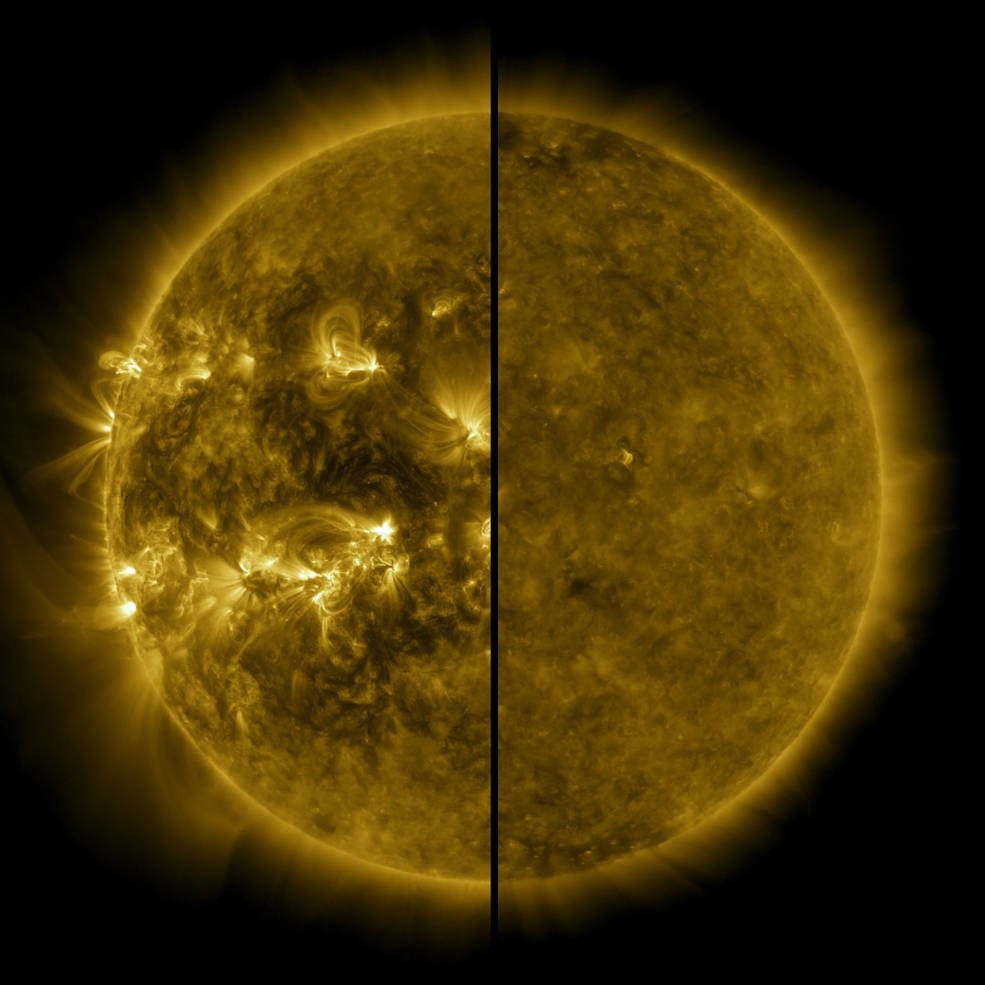Far from our planet's woes, the Sun has had a rather quiet year. A recent review of its activity confirms what many have suspected for a few months:our star has entered a new solar cycle since December 2019.
We have known since the middle of the 18th century that our Sun evolves according to a cycle of 11.2 years, during which its activity varies between a maximum and a minimum. Scientists use sunspots, the results of an extremely complex magnetic field, to track the progress of these successive patterns. There have been 24 such cycles since sightings were first recorded.
A few months ago, researchers from the Space Weather Prediction Center (SWPC, USA) pointed out thirty consecutive days without any visible spots. The sign, according to them, that we were close to entering a new solar cycle. An Indian team from IISER Kolkata had also confirmed these suspicions, reporting the reversal of the solar magnetic field at the beginning of the year 2020.
A panel consisting of experts from NASA and the National Oceanic and Atmospheric Administration (NOAA), after a thorough examination of the activity of our star, indeed confirms that December 2019 marked the beginning of cycle 25 .
To determine the start of this new cycle, the researchers consulted monthly sunspot data compiled by the World Data Center for the Sunspot Index and Long-term Solar Observations, located at the Royal Observatory of Belgium in Brussels.

Experts now expect the Sun's activity to gradually increase, leading us towards the next maximum expected in July 2025 . Doug Biesecker, panel co-chair and solar physicist at NOAA's Space Weather Prediction Center (Colorado), predicts that this new cycle will be "as strong" as the last solar cycle, considered "below average".
Nevertheless, “just because it's a below-average solar cycle doesn't mean there won't be a chance of space weather extreme” , he explained. “The impact of the sun on our daily lives is very real and exists. Also we monitor it 24/7 and 365 days a year, because it is always able to surprise us” .
For those interested, astronomers recently compiled all the images taken by the Solar Dynamics Observatory (SDO) between June 2, 2010 and June 1 2020 in order to create a time-lapse showing solar activity during this period. Each second of the video here represents a day in the life of our star. And if you have the eye, you will also notice the brief transit of Venus operated on June 6, 2012.